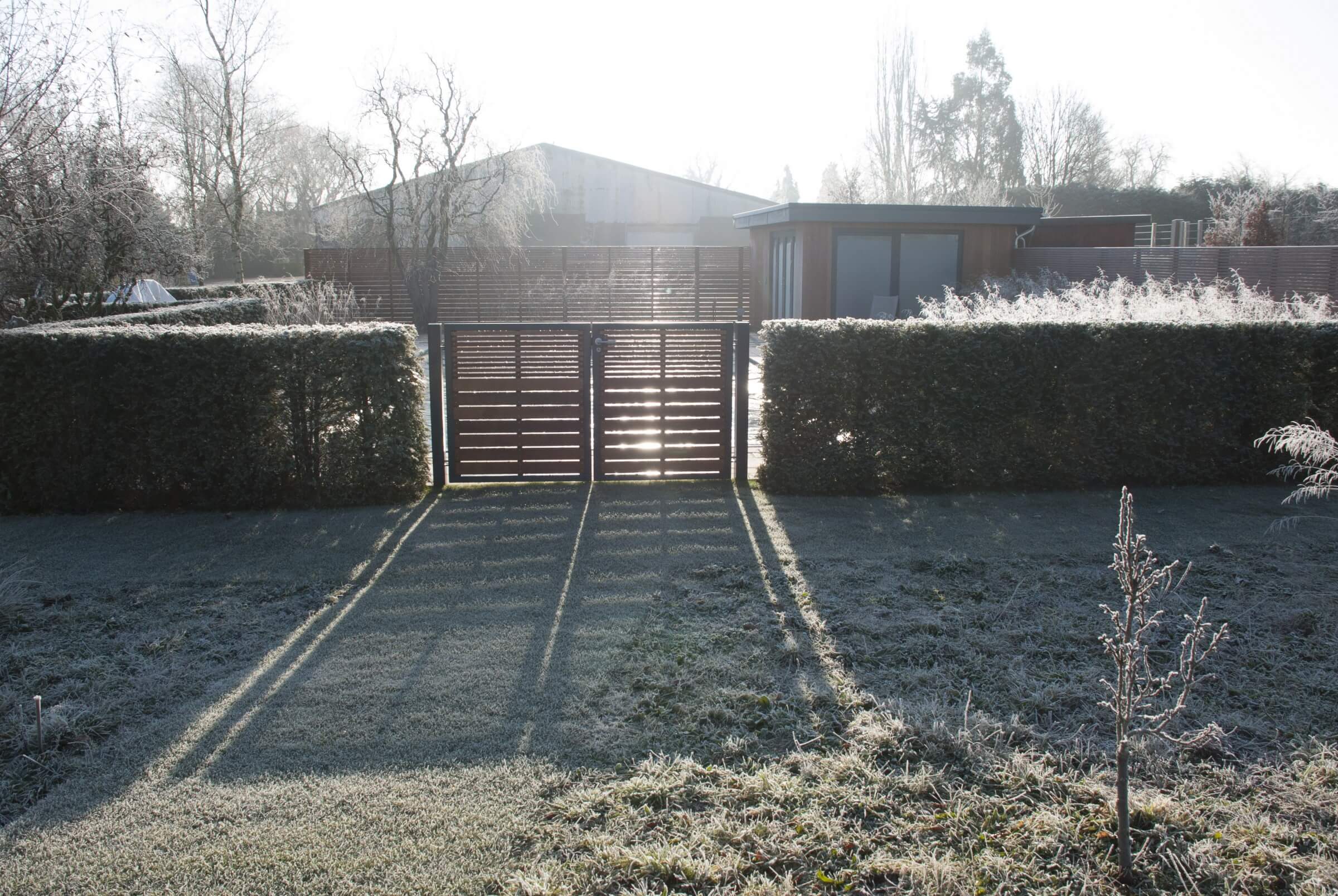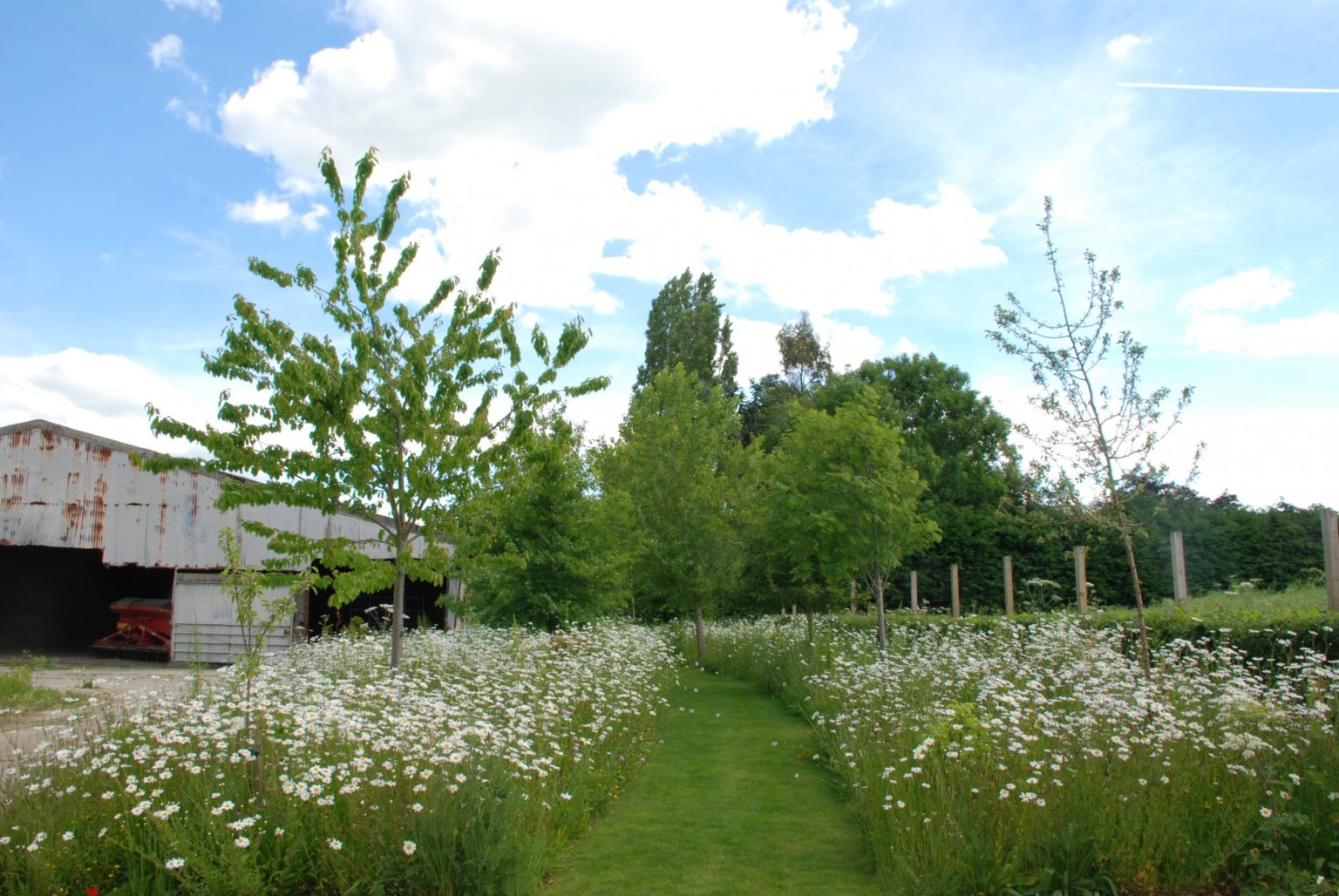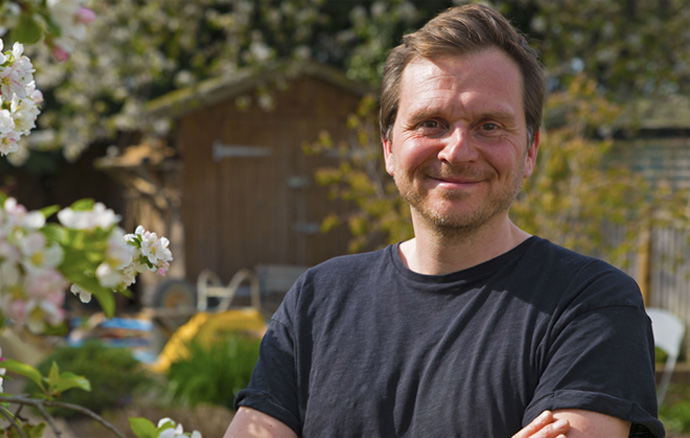Why should we plant Wildflower Meadows?
I believe in very attractive well kept, ornamental gardens, but I also believe in wild spaces. If we have enough ground in a garden I believe in creating some wild space. There are several reasons for this, firstly because of the environment, but also because Wildflower meadows create fantastic mood in your garden. This wildness that can be juxtaposed with mown paths. A sense of getting away in a country estate, a field that has been unused and mown regularly, can have a magical feel all of a sudden, and become a place we actually long to walk and visit, to have a picnic.
What are the advantages of a Wild Flower Meadow?

– Plant diversity attracts wildlife, invertebrates birds and mammals. I have been amazed to see birds running in and out of meadow, their beaks stuffed with insects, too busy to fly anymore, they just run in and out flying off to their nest to feed their young, only to return immediately. This also happens in gardens with large flower beds, but another huge benefit is to insects, Bees, Butterflies and other invertebrates. Most of us are aware of hoe much help we need to provide to bees and other insects at this time.
-Wildflower meadows are fairly easy to maintain, only requiring some basic weeding if you wish to keep thistle and other dominating species down until the meadow develops, and cutting once a season is fine.
-The wildflower meadow creates a different atmosphere in the landscape which can be a wonderful comparison to ornamental flower beds
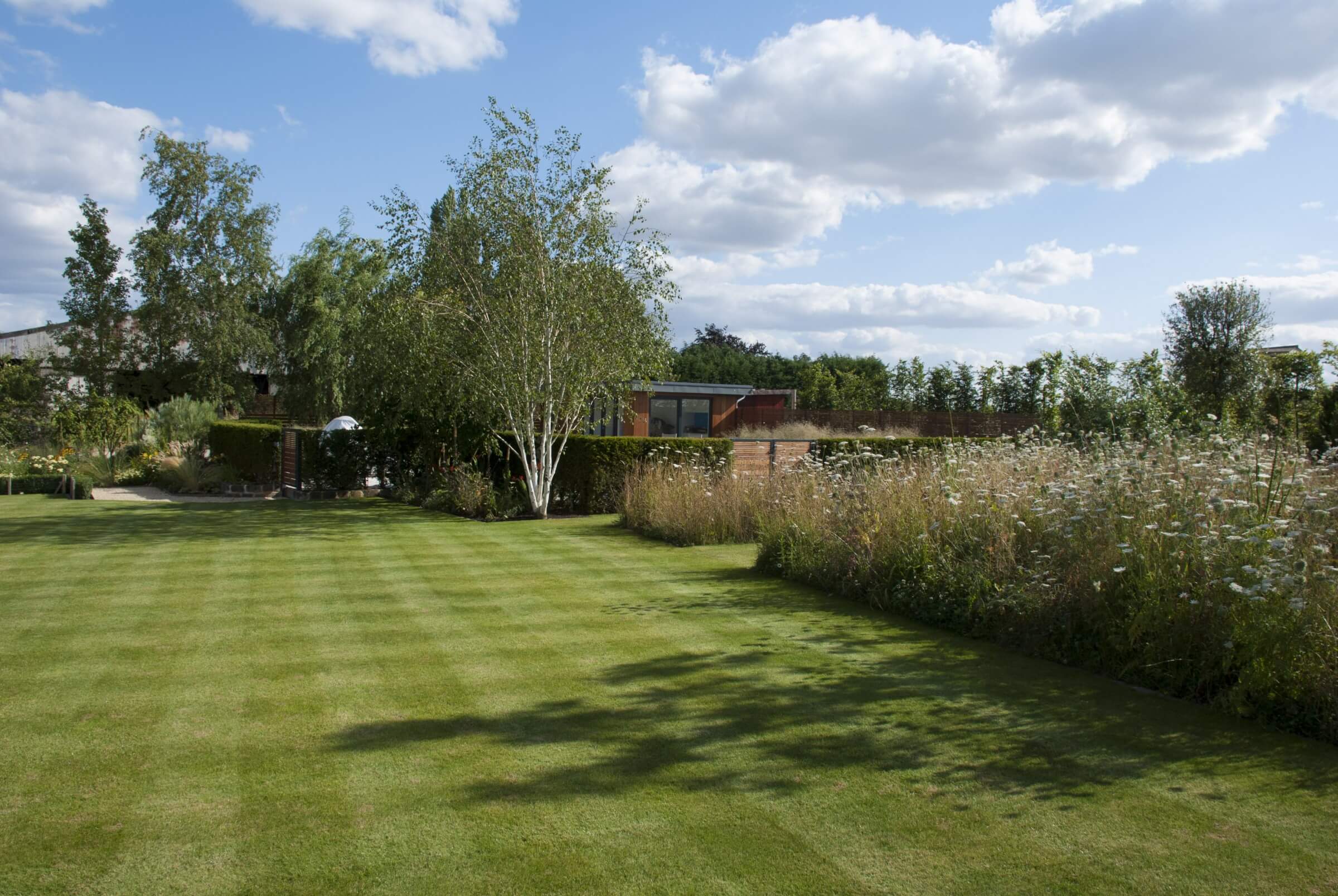
-The meadow creates a real sense of seasonality with the young shoots in spring, the lush flowering summer period and the dry yellowing late summer and autumn period.
Here are some images of wild meadows at different times of year and how they can be used in terms of design.

Bulbs can be planted on mass for the spring, here several thousand Camassia leichtlinii were planted to add early interest.
Later in the year, the Ox eye daisies often take over which I think is very beautiful.
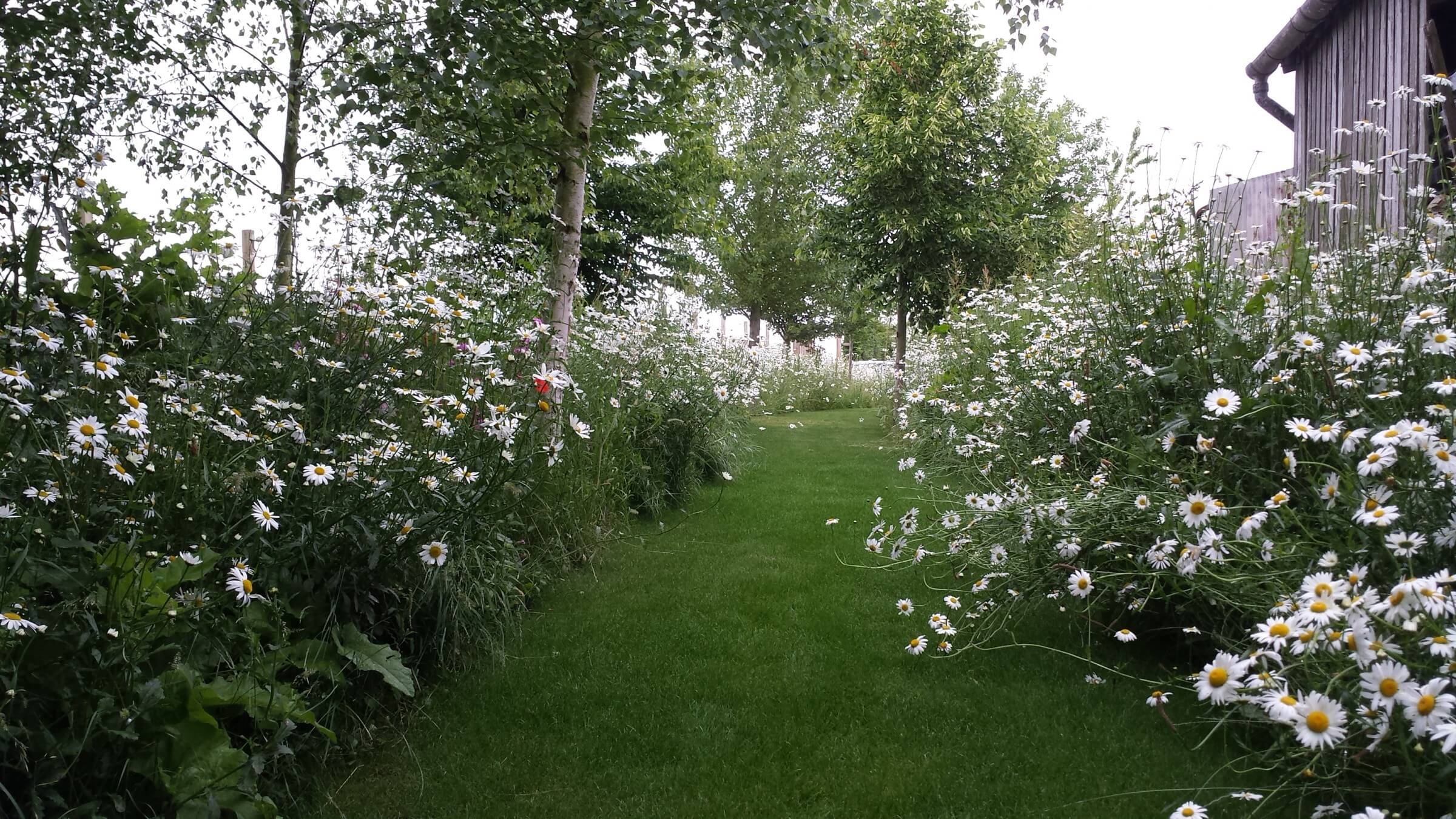
When the daisies die back, the meadow can be cut back to make room for other flowering plants, or you can leave the meadow to turn golden allowing other plants such as wild carrot to come through at the same time.

How to Make a Wildflower Meadow
Making Wildflowers grow effectively it is best if they grown in a poor quality soil. In most cultivated ground the soil is so high in nutrients, when you try to seed wild flowers, the grass would near enough immediately succeed the flowers. So there seems to be 2 ways to approach making a wild flower meadow with that in mind.
The Easier Cheaper Method
You can seed a plant which dominates the grass at first like Yellow Rattle ‘Rhinanthus minor’ *1 and then seed flowers into that at later stage. The problem is there is still a solid root structure of grass in place, which I believe means the grass is still firmly present although it is supressed. A more effective method, in my opinion, although harder and more energy consuming at first, I believe it returns the soil to a more impoverished state quicker, thus allowing the meadow to develop less hindered, which I think gives it better chance of establishing for years to come if managed correctly.

*1 Yellow Rattle grows in the spring, its roots spread out and attach to surrounding plants particularly grasses, the yellow rattle then sucks moisture and nutrients from those plants suppressing them by up to 60%.
The Comprehensive Approach (Still Taking 2-3 Years to Develop Fully)
The grass is removed mechanically down to 5-6cm which removed a lot of the dense rots, that material is then taken away for recycling, The ground can be turned to bring up the poor quality sub soils while also improving drainage and any poor soil materials found on the site during the works can be dressed on the top surface to further impoverish the growing medium. We often place many tons of grit sand on the top surface, this introduces further poor quality material and supresses the grass that is still present from growing back. A wild meadow is then seeded into the space. This meadow needs to be watered in dry weather because the sand leaches water away, but once established you have a good matrix of hardy broad leaved plants with a little grass in place. The meadow will germinate and grow in the first year, but it won’t be until the second season that it creates a beautiful display.
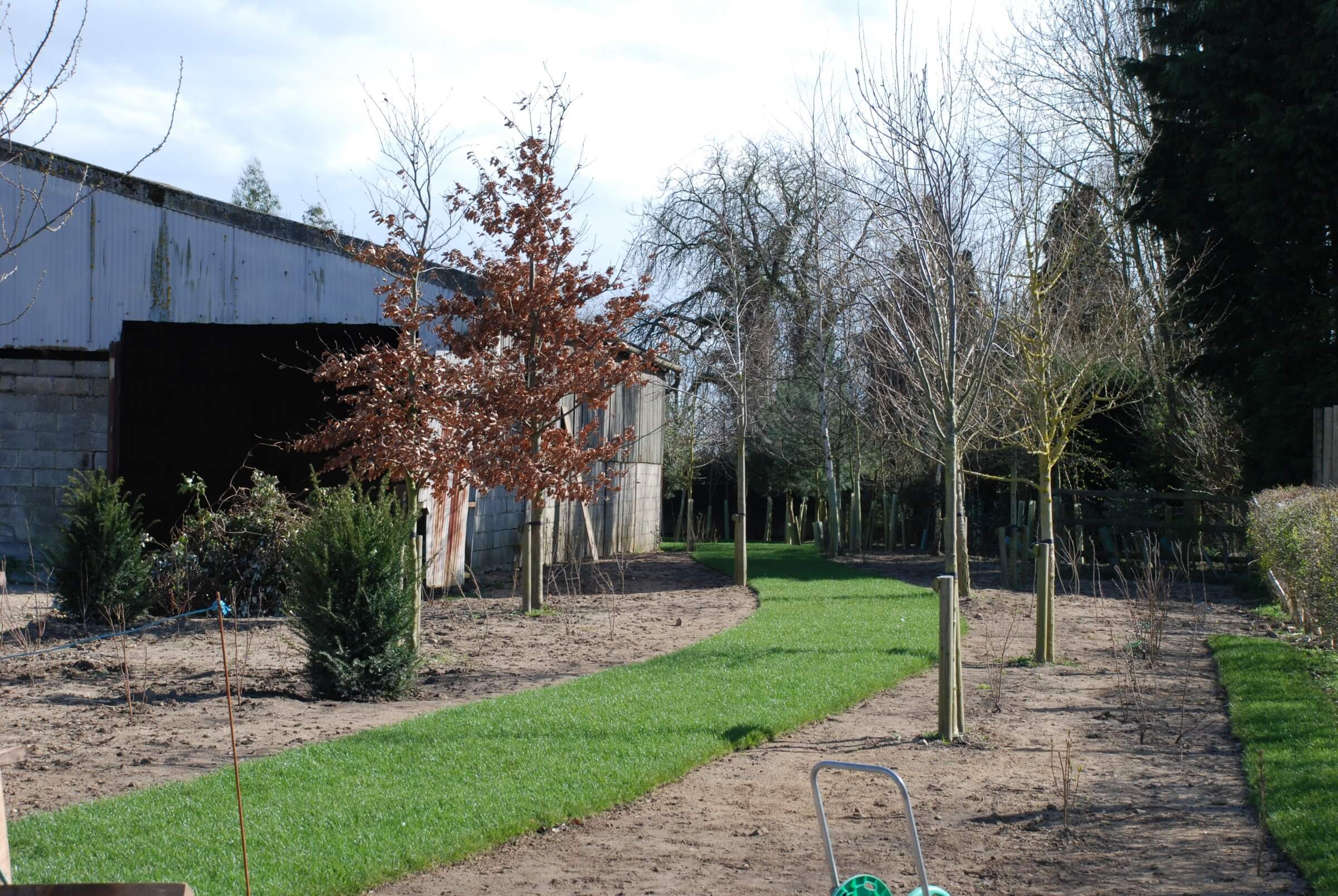
Incidentally, most meadow mixes come with a small portion of grass which we essentially reintroduce at the right ratio (so perhaps 5%).
It is often a good idea to weed the meadow, this stops it becoming dominated by dandelion or thistle as it develops. Once it has developed this should be less important although these plants can always blow in from adjacent spaces.
